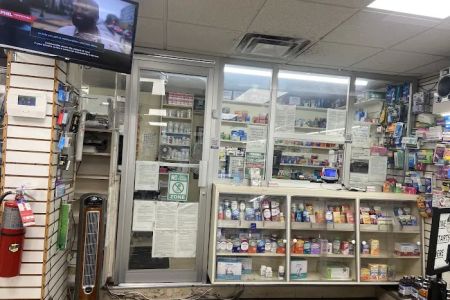How to Transfer Prescriptions Between Pharmacies
Transferring prescriptions from one pharmacy to another is a process that many people may find themselves needing at some point in time. Whether it’s due to relocation, finding a more convenient pharmacy, or seeking a better price for medications, understanding how to transfer prescriptions seamlessly can save time and hassle. In this article, I will guide you through the steps, and provide tips and insights into how to transfer your prescriptions with ease.
1. Why Transfer Prescriptions?
There are many reasons why you might consider transferring your prescriptions. Perhaps you’ve moved to a new area, or maybe your current pharmacy doesn’t carry the medication you need. You may also want to find a pharmacy with better customer service or more affordable prices. Whatever the reason, transferring prescriptions is a straightforward process that can be done quickly and easily.
2. The Basic Steps of Transferring a Prescription
The first step in transferring your prescription is to contact your new pharmacy. Provide them with the necessary details, such as your prescription information and the name of the medication. Most pharmacies will ask for your prescription number, which you can find on your prescription label. If you don't have that information, don’t worry – your old pharmacy can help you retrieve it.
Once the new pharmacy has all the necessary details, they will contact your old pharmacy to request a transfer. In many cases, the process is handled electronically, making it quick and seamless. However, in some cases, it may take a few days to complete, especially if the pharmacies are in different states or if the medication is a controlled substance, which may require additional documentation.
3. Can Any Prescription Be Transferred?
While most prescriptions can be transferred between pharmacies, there are some exceptions. For instance, prescriptions for controlled substances, such as opioids and certain other medications, cannot be transferred. These prescriptions are subject to stricter regulations and require additional steps to process. It’s also important to note that some medications may not be available at every pharmacy, especially specialty drugs. However, your pharmacist can work with you to find an alternative or provide recommendations on where to get the medication.
4. How to Transfer Prescriptions for Refills
If you’re transferring prescriptions with refills remaining, it’s important to know that your new pharmacy may not be able to honor the remaining refills. This depends on how many refills were left on the original prescription and the specific pharmacy's policies. If you have refills left, your new pharmacy will generally contact your doctor’s office to verify the refills and ensure that they are still valid. If no refills remain, the pharmacist will need to contact your healthcare provider for a new prescription.
5. What Information Will the New Pharmacy Need?
When you initiate a prescription transfer, the new pharmacy will typically ask for the following information:
- Your full name and date of birth
- Your prescription number (if available)
- The name of the medication, dosage, and directions
- The name and contact information of the prescribing doctor
- Your old pharmacy’s contact information
Having this information handy will streamline the process and ensure a smooth transfer of your prescription.
6. Can You Transfer Prescriptions Between Mail-Order Pharmacies?
Yes, transferring prescriptions between mail-order pharmacies is possible, but it may involve more time and additional steps. Some mail-order pharmacies require specific forms to be completed before they can process a transfer, and they may require the original prescription to be sent. Contact your mail-order pharmacy for specific instructions on how to complete the transfer process.
7. Potential Challenges and Solutions
While transferring prescriptions is usually a simple process, there can be some challenges. If the medication is out of stock, your new pharmacy might not be able to fulfill your prescription right away. Additionally, if there are issues with refills or specific medications are not available, you may have to contact your doctor for a new prescription or find another pharmacy that carries the medication. Be proactive and communicate with both pharmacies to resolve any issues efficiently.
8. Conclusion
Transferring prescriptions between pharmacies is a straightforward process that can be done with minimal effort. By following the steps outlined in this article, you’ll be able to manage your prescriptions efficiently and avoid interruptions in your medication. Whether you’re moving to a new location, seeking better pricing, or just looking for a more convenient pharmacy, transferring prescriptions can make your life easier. If you need help with a prescription transfer, don’t hesitate to reach out to your pharmacist or your healthcare provider for assistance.
For more information or to find the best pharmacy for your needs, visit us at Pharmacy.














